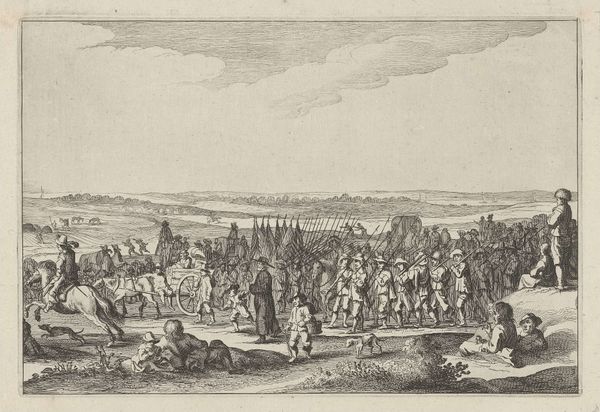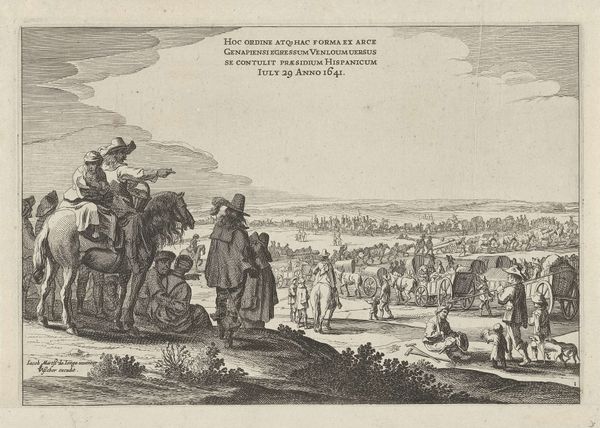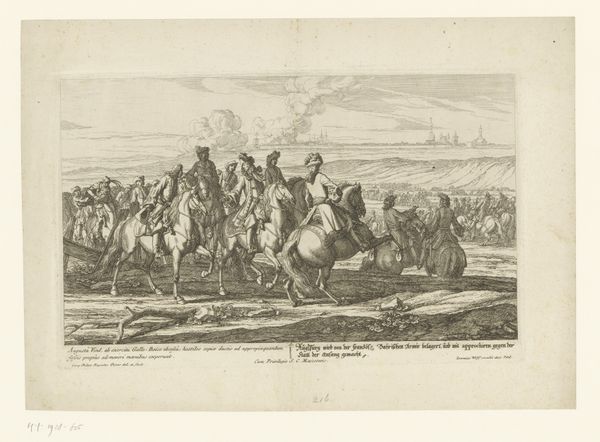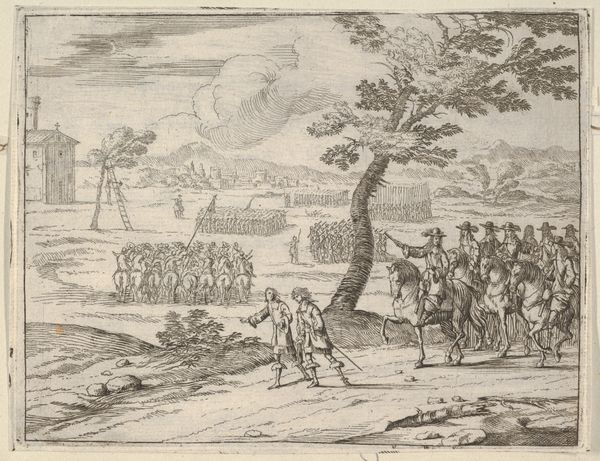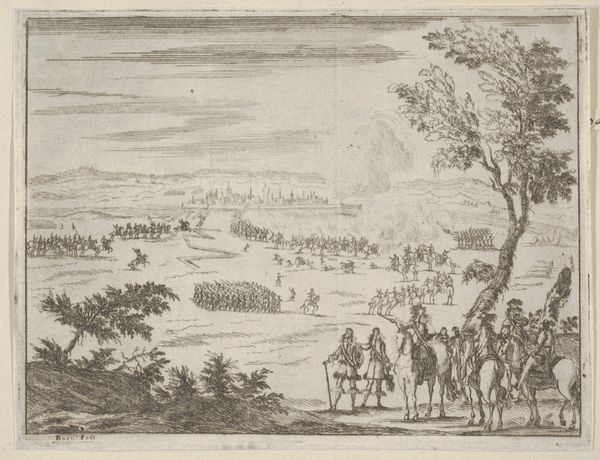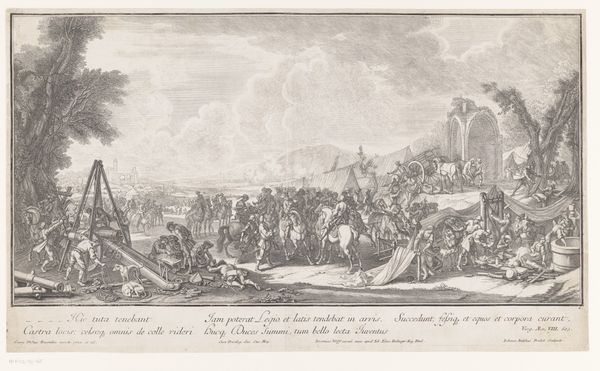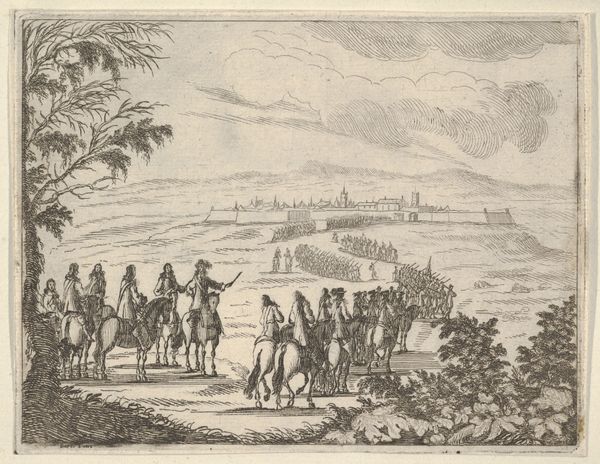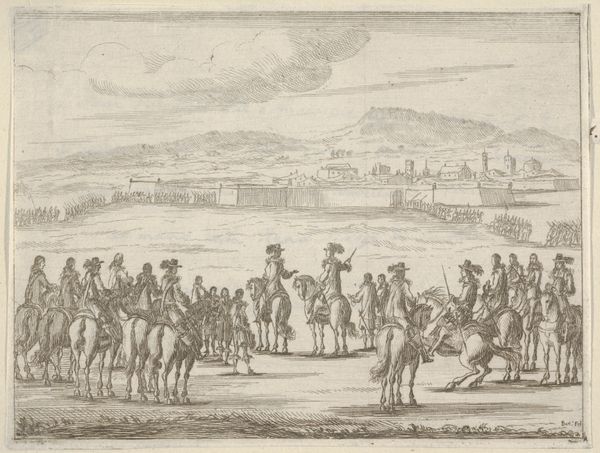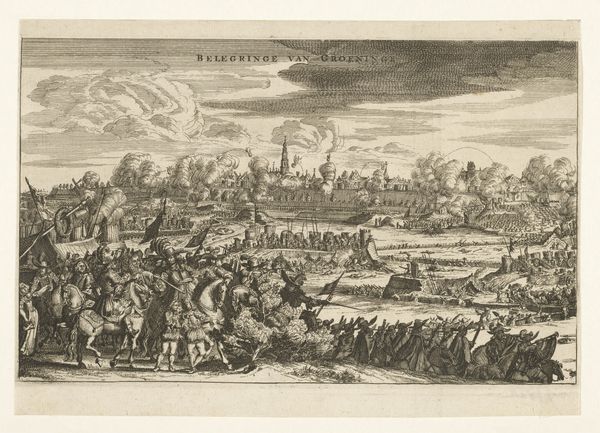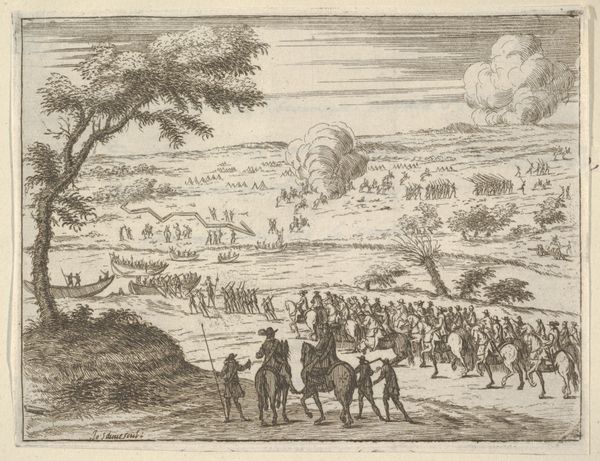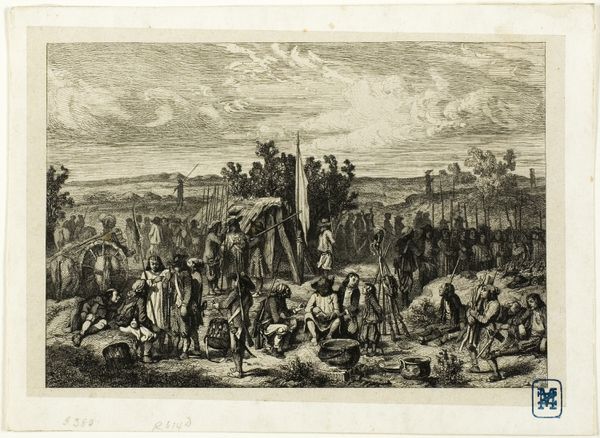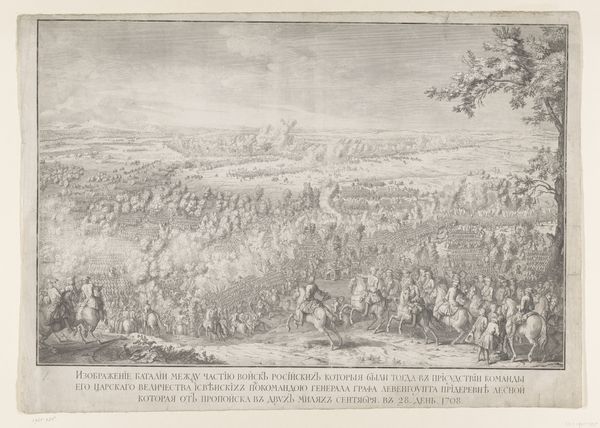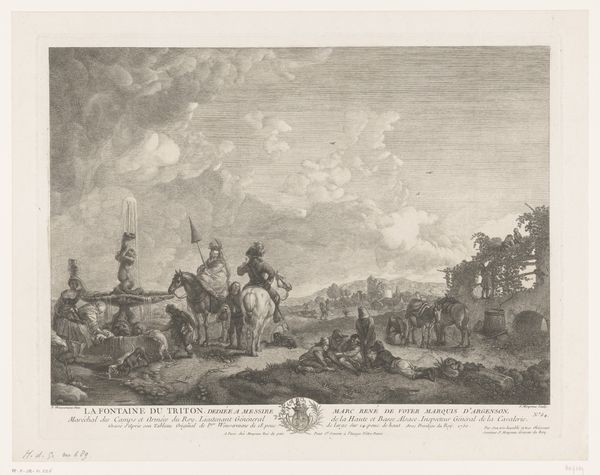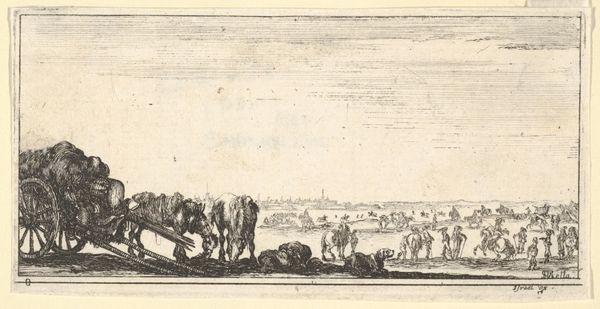
Ruiters en voetvolk bij het vertrek van het Spaanse garnizoen uit Gennep 1641
0:00
0:00
print, engraving
#
dutch-golden-age
# print
#
old engraving style
#
landscape
#
figuration
#
line
#
history-painting
#
engraving
Dimensions: height 205 mm, width 301 mm
Copyright: Rijks Museum: Open Domain
Editor: This print by Pieter Nolpe, from 1641, is titled "Ruiters en voetvolk bij het vertrek van het Spaanse garnizoen uit Gennep" - or, "Cavalry and Infantry at the Departure of the Spanish Garrison from Gennep". The level of detail is striking. How do you interpret this work in its historical context? Curator: This piece offers a powerful lens through which to examine the complexities of power, conflict, and national identity in the 17th century. Consider, who gets to be represented in this "historical" account and how? Is this departure a moment of liberation for some and a defeat, perhaps even dispossession, for others? Editor: That's interesting; I hadn't thought about it in terms of winners and losers, but more as a specific event. Can you elaborate on the socio-political dynamics at play here? Curator: Certainly. The Dutch Golden Age was a period of intense negotiation around national identity and independence. Nolpe’s engraving captures not just a military departure but also the shifting allegiances and power structures of the time. What does it mean to commemorate the exit of one power, especially in terms of solidifying the identity of the emergent one? How might those who remained, perhaps displaced by the conflict, view this seemingly celebratory scene? Editor: So, by focusing on the social and political context, you're saying that Nolpe's print can be interpreted as a statement about Dutch independence and perhaps the marginalization of certain groups during this transition? Curator: Precisely. It invites us to critically consider the narratives embedded in historical representations and their impact on shaping collective memory and social justice. By situating this work within the context of power and identity, we reveal both its celebration of a particular victory and its inherent erasures and silences. Editor: I see. I hadn't considered the engraving representing an inherently political stance at the expense of other perspectives, but I can clearly see that now. Thank you! Curator: Absolutely! Analyzing historical context can uncover the hidden power dynamics within artworks.
Comments
No comments
Be the first to comment and join the conversation on the ultimate creative platform.
